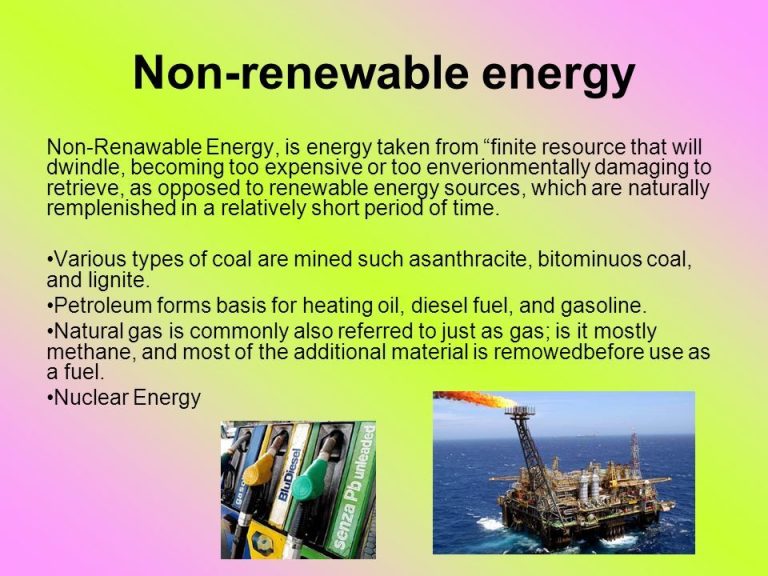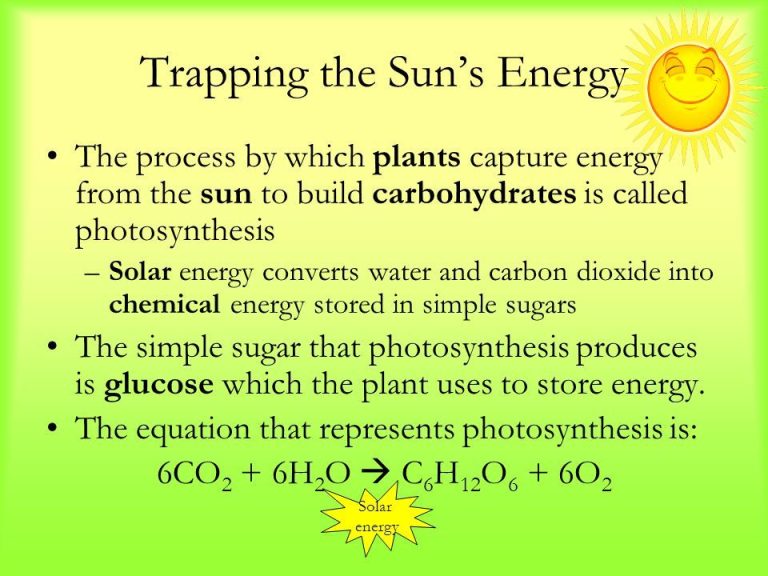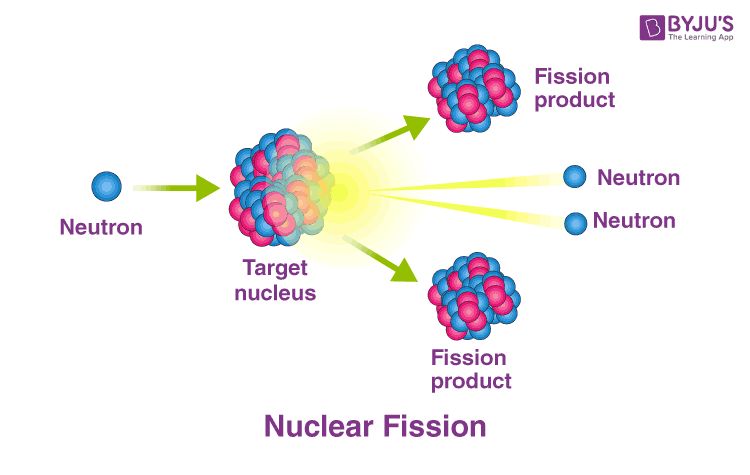Is 100 Renewable Energy Realistic?
Renewable energy comes from natural sources that are replenished constantly, such as sunlight, wind, water, plants, and geothermal heat. The most common renewable energy sources are solar, wind, hydroelectric, biomass, and geothermal. In 2016, renewable energy accounted for around 11% of total global energy consumption, with most coming from traditional biomass and hydropower. The percentage of renewable energy is higher in some major economies, such as Germany at 13%, China at 12%, and the U.S. at 10%.
There is growing interest in transitioning to 100% renewable energy for electricity, heating, transportation, and industrial uses. The primary motivations are reducing greenhouse gas emissions to mitigate climate change, improving public health by reducing air pollution, enhancing energy security by using domestic resources, and driving new technological innovation and job creation. Modeling studies have shown that 100% renewable energy is technically feasible in many regions of the world, often at costs comparable to fossil fuels, further driving interest in this transition. [1]
Benefits of 100% Renewable Energy
Transitioning to 100% renewable energy would provide substantial benefits compared to our current fossil fuel-based energy system. Three major benefits of 100% renewables are reduced greenhouse gas emissions, improved public health, and increased energy independence and security.
Generating all of our energy from renewable sources like wind, solar, hydropower, geothermal and biomass would dramatically reduce greenhouse gas emissions that cause climate change (EPA). Most renewable energy technologies produce little to no global warming emissions, unlike burning fossil fuels. Shifting to renewables is a necessary step to avoid the worst impacts of climate change.
In addition to climate benefits, renewable energy results in cleaner air which improves public health. Unlike fossil fuel-fired power plants, renewable energy systems create no air pollution emissions that harm human health. Reduced air pollution from fully renewable electricity would prevent thousands of premature deaths in the U.S. each year (UCSUSA).
Finally, renewable energy enhances energy independence and security by relying on domestic energy sources. Fossil fuels like oil and natural gas are vulnerable to volatile prices and uncertainty in foreign supplies. In contrast, the “fuel” sources for renewable energy are wind, sun, water, and heat from the earth which are available everywhere. Transitioning to domestic renewables provides a secure and stable energy supply (DOE).
Challenges of 100% Renewable Energy
While transitioning to 100% renewable energy has many benefits, there are also significant challenges that need to be addressed. Some of the main challenges include:
Intermittency of wind and solar – Wind and solar power are intermittent sources of electricity, dependent on weather conditions. This variability makes it difficult to perfectly match supply with demand at all times (Recharge News).
Storage needs – Large scale energy storage solutions, like batteries and pumped hydro storage, are needed to store excess renewable electricity for when the wind isn’t blowing or sun isn’t shining. However, these technologies are still costly and limited in capacity (NREL).
Transmission infrastructure – New transmission lines are required to connect renewable energy projects, which are often located far from population centers that need the electricity. Upgrading transmission is expensive and faces permitting challenges (Big Think).
Cost – While renewable costs have fallen dramatically, transitioning the last 10-20% to renewable energy can be disproportionately expensive. Additional storage, transmission, and grid flexibility investments add to costs (NREL).
Examples of Progress Toward 100%
Several countries, states, cities and companies have made commitments and progress toward 100% renewable energy. Here are some examples:
Costa Rica ran on 100% renewable energy for 300 days in 2017, relying on hydropower, wind, solar and geothermal. The country aims to be carbon neutral by 2050. (https://www.un.org/en/climatechange/what-is-renewable-energy)
Iceland generated 100% of its electricity from renewables in 2021, primarily through hydropower and geothermal energy. (https://www.nationalgrid.com/stories/energy-explained/what-are-different-types-renewable-energy)
In 2020, Scotland generated 97.4% of its electricity consumption from renewables. Wind power accounted for over half its renewable generation. (https://www.energy.gov/eere/renewable-energy)
Google has matched its entire global electricity consumption with renewable energy since 2017. The company aims to operate carbon-free by 2030. (https://www.energy.gov/eere/renewable-energy)
Madrid, Spain banned gasoline and diesel powered cars from the city center and dropped public transit fees in an effort to increase renewable energy to 25% by 2030. (https://www.un.org/en/climatechange/what-is-renewable-energy)
Technological Advances Enabling 100% Renewable Energy
Several key technological advances are making the goal of 100% renewable energy more feasible. One major area is improved energy storage solutions like batteries that can store solar and wind power when production exceeds demand and discharge when needed. Companies like Tesla have driven down battery costs through mass production and improved battery chemistry (IEA).
Smart grids are another enabler, using sensors, automation, and two-way communication to balance supply and demand in real-time. Smart grids can manage the intermittency issues around solar and wind while making the overall system more resilient (MDPI).
There have also been major advances in renewable technologies themselves like more efficient solar panels, larger wind turbines, and geothermal and tidal power innovations. For example, new materials and manufacturing methods have increased solar cell efficiency above 20% (Agarwal).
Policy Support Needed
Achieving 100% renewable energy will require strong policy support at the federal, state, and local levels. Some key policies that can accelerate the transition include:
Subsidies and Tax Credits
Financial incentives like subsidies and tax credits help make renewable energy more affordable and attractive to consumers and businesses. According to the Energy Information Administration, subsidies for renewable energy totaled $6.7 billion in 2019, led by wind energy. Extending existing tax credits and providing new subsidies can continue driving growth in renewables (IEA).
Renewable Energy Mandates and Standards
Over 30 states have renewable portfolio standards that require utilities to source a percentage of their electricity from renewables. These mandates increase demand for renewable energy. For example, California recently increased their RPS goal to 100% zero-carbon electricity by 2045 (Energy.gov). Strong nationwide renewable energy standards will provide regulatory certainty needed to achieve 100% renewables.
Carbon Pricing
Putting a price on carbon emissions through carbon taxes or cap-and-trade programs makes fossil fuels more expensive relative to renewable energy. According to the Center for Climate and Energy Solutions, explicit carbon pricing programs cover 21% of global emissions. Broader adoption of carbon pricing improves the economics of renewables and discourages fossil fuel use (C2ES).
Projected Timelines for 100% Renewable Energy
Most optimistic estimates project the world could reach 100% renewable energy by 2030. For example, a report by Greenpeace, the Solutions Project, and the Energy Revolution estimated that the world could transition to 100% renewable energy by 2030-2050 through large investments in solar, wind, and energy storage technologies (Source). More conservative estimates suggest 2060 as the earliest plausible timeline.
The International Renewable Energy Agency (IRENA) projects that with concerted efforts, the share of renewables in total final energy consumption could reach 65% by 2030 and 85% by 2050 worldwide. In its roadmap to net zero emissions by 2050, IRENA suggests renewable energy would need to supply at least 85% of global electricity by 2050 (Source).
According to projections by the International Energy Agency (IEA), renewables could reach over 60% of global electricity generation by 2030 in its most ambitious Net Zero Emissions by 2050 Scenario. Other major research organizations like BloombergNEF, McKinsey & Company, and Wood Mackenzie have offered similarly optimistic outlooks for renewables by 2030-2040.
Public Opinion on 100% Renewable Energy
Public support for transitioning to 100% renewable energy is strong, according to recent opinion polls. An early 2022 Pew Research Center survey found that 69% of Americans say developing renewable energy should be more of a priority than expanding fossil fuel sources. In a follow-up 2023 Pew poll, 82% supported expanding solar and 75% supported more wind farms.
There is also willingness to pay more for renewable energy. A 2021 Clean Power poll showed 80% believe clean energy is as or more reliable than fossil fuels. Most respondents were willing to pay $2-10 extra per month to achieve 100% clean energy by 2035.
With strong majorities supporting renewable expansion even if it costs more, public opinion seems to be on the side of accelerating the transition away from fossil fuels.
Conclusions
When evaluating the feasibility of 100% renewable energy, there are reasonable arguments on both sides. Proponents highlight the rapidly declining costs and improving efficiencies of renewable technologies like solar, wind, and energy storage. We now have several examples of cities, states, and countries generating over half their electricity from renewables, demonstrating it is possible to scale these technologies. However, opponents argue the variability of solar and wind makes 100% renewables unreliable without excess storage capacity, which remains expensive. They also point out challenges covering seasonal fluctuations in renewable generation. There are also concerns around land use constraints for building sufficient renewable capacity.
In the end, achieving 100% renewable energy would likely come with tradeoffs around reliability and costs, at least with current technologies. However, continued innovation and declining storage costs may make 100% renewables more feasible several decades from now. While still an ambitious target, many energy experts believe getting to 80-90% renewables is achievable in the coming years with the right supportive policies. This can significantly reduce carbon emissions from the power sector while limiting reliability risks and costs. Overall, 100% renewable energy is likely not a realistic near-term target for most countries, but steady progress in deploying high levels of renewables will help bring that goal within reach further down the road.
References
Jacobson, M.Z., Delucchi, M.A., Bazouin, G., Bauer, Z.A.F., Heavey, C.C., Fisher, E., Morris, S.B., Piekutowski, D.J. Y., Vencill, T.A., Yeskoo, T.W. (2015). 100% clean and renewable wind, water, and sunlight (WWS) all-sector energy roadmaps for the 50 United States. Energy & Environmental Science, 8(7), 2093-2117.
Lovins, A.B. (2011). Reinventing Fire: Bold Business Solutions for the New Energy Era. Chelsea Green Publishing.
REN21. (2022). Renewables 2022 Global Status Report. REN21 Secretariat.
Watts, J. (2019, May 13). The Rapid Rise of America’s Solar and Wind Sectors. BBC. https://www.bbc.com
WWF. (2011). The Energy Report. WWF International.





